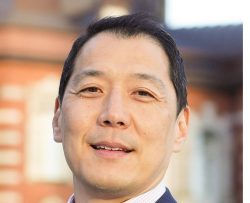15:41 JST, September 27, 2024
More than 40 years have been spent on working toward retrying the case since his death sentence was finalized, as he has been tormented by judicial rulings that made several turns. To prevent such a situation from ever happening again, the system should be changed so that retrials proceed promptly.
Iwao Hakamata, whose death sentence was finalized over the 1966 murder and robbery incident in which four members of a family in Shizuoka Prefecture were killed, was acquitted by the Shizuoka District Court in his retrial. This is the fifth case since the end of World War II in which a retrial has resulted in the acquittal of a defendant, whose death sentence had been finalized.
The point of contention for the retrial was whether a shirt and other items of clothing found in a tank at a miso factory near the crime scene about a year after the incident belonged to Hakamata.
Bloodstains remained on the clothing, which were cited in the first ruling to sentence Hakamata to death as the garments worn by him when the crime was committed. At the retrial, the prosecution again argued, based on this ruling, that Hakamata was the criminal.
However, the court ruled on Sept. 26 that “the clothing was fabricated by investigative authorities and that the confession was also obtained through inhumane interrogation.” Based on this recognition, the court concluded that Hakamata “cannot be recognized as the murderer.”
It is inexcusable if investigative authorities created evidence to suit their own convenience and produced false accusations. The prosecution must not be allowed to appeal the case in an attempt to save face for the organization.
Hakamata’s first request for a retrial was filed in 1981. The second request was granted in 2014, and he was released after a retrial was set to begin. However, even after that, judicial decisions made several turns over his guilt or innocence.
Hakamata, who was 30 years old when he was arrested, had been in custody for nearly half a century and is now 88. During that period, he lived in fear of execution. The time he had spent trying to exonerate himself of his false accusations was tremendously long.
Under the current system, even if the court decides to begin a retrial, the prosecution can file a complaint against the decision. For that reason, the preliminary procedures for a retrial continue endlessly, and the hearings for the retrial do not begin easily.
It is advisable that once a decision is made to initiate a retrial, the case should immediately go to hearings, and the court should determine the defendant’s guilt or innocence in an open courtroom. This should shorten the retrial procedures greatly.
There is also a problem with the system of evidence disclosure. Since the retrial system does not legally require the prosecution to disclose evidence, there are cases in which prosecutors do not immediately reveal important evidence.
In the case of Hakamata, too, color photographs of bloodstained clothing led to his acquittal, but the prosecution did not disclose them until the second request for a retrial. Clarification of the rules for the disclosure of evidence is indispensable to help save defendants from false accusations.
(From The Yomiuri Shimbun, Sept. 27, 2024)
"Editorial & Columns" POPULAR ARTICLE
-

Violations of Subcontract Law: Major Automakers Must Eliminate Old Practices
-

Local Governments’ Tax Revenues: Devise Ways to Correct Imbalances in Tax Sources
-

5 Japanese Business Dinner Mistakes to Avoid — and What They Taught Me About Business in Japan
-

Heavy Rains in Asia: Support for Victims, Flood-Control Measures Urgently Needed
-

Rice Coupons: A Misguided Approach to Countering Rising Prices
JN ACCESS RANKING
-

Tokyo Economic Security Forum to Hold Inaugural Meeting Amid Tense Global Environment
-

Keidanren Chairman Yoshinobu Tsutsui Visits Kashiwazaki-Kariwa Nuclear Power Plant; Inspects New Emergency Safety System
-

Imports of Rare Earths from China Facing Delays, May Be Caused by Deterioration of Japan-China Relations
-

University of Tokyo Professor Discusses Japanese Economic Security in Interview Ahead of Forum
-

Japan Pulls out of Vietnam Nuclear Project, Complicating Hanoi’s Power Plans






















